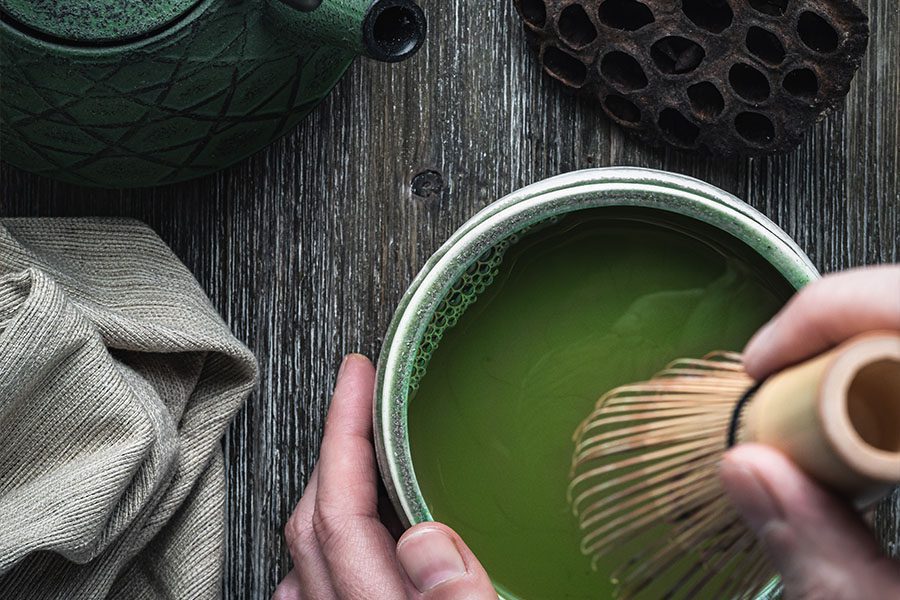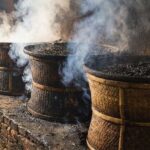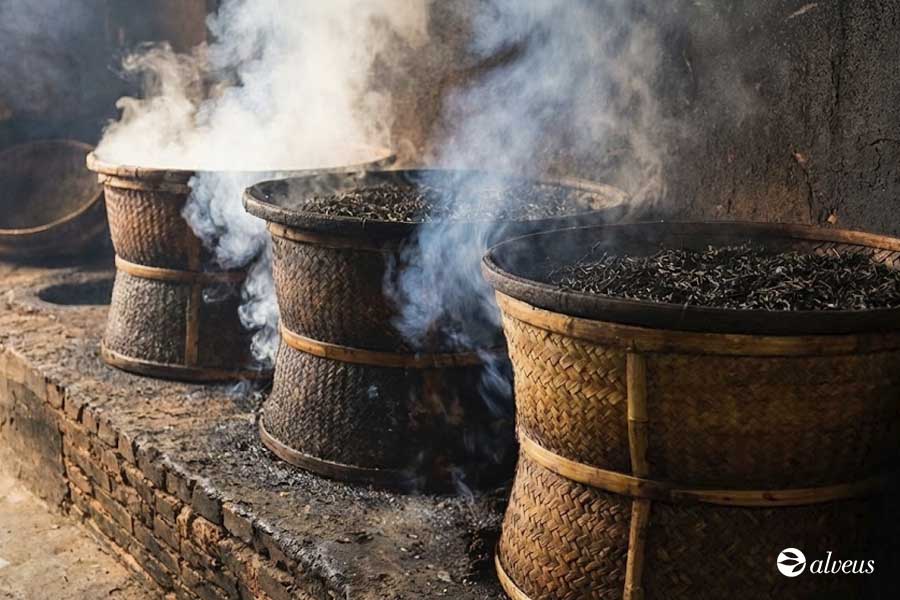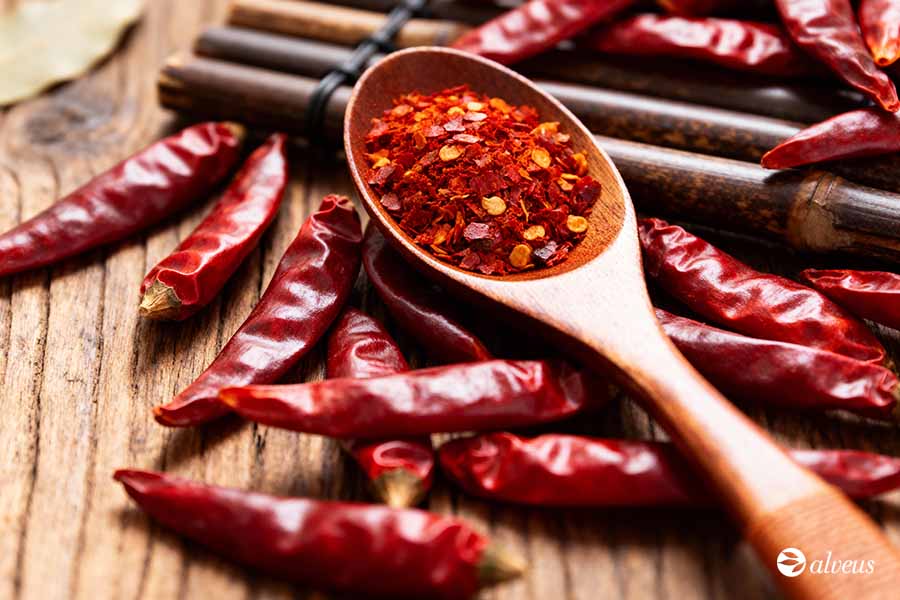Japanese teas, with their extensive history and refined production techniques, symbolise a balance between tradition and modernity.
The tea industry not only constitutes a cultural pillar of daily life in Japan but also represents a vital economic force, generating thousands of jobs and significantly contributing to both local and national development.
Regions like Shizuoka and Kagoshima heavily rely on tea production for their economic stability, and the international market increasingly values the exceptional quality and sustainable production practices of Japanese teas.
For tea professionals, understanding the depth and variety of Japanese teas represents a valuable opportunity to enrich their knowledge and to significantly expand their offerings in a constantly evolving market.
History and Traditions of Japanese Tea
Tea’s origins in Japan trace back to the 8th century when Emperor Shömu introduced tea in a Buddhist ceremony. However, it wasn’t until the 12th century, with the Buddhist monk Eisai, bringing tea seeds from China, that tea began to take root in Japanese culture.
Since then, tea has evolved from being an exclusive beverage for the elites to become a common part of everyday life as well as of spirituality in Japan.
During the Edo period, tea’s popularity surged with the invention of the steaming method for green tea sencha, democratising its consumption across social classes.
Concurrently, the tea ceremony known as Chanoyu evolved into an artistic manifestation of Zen philosophy and an aesthetic appreciation.
Japanese Tea Ceremony
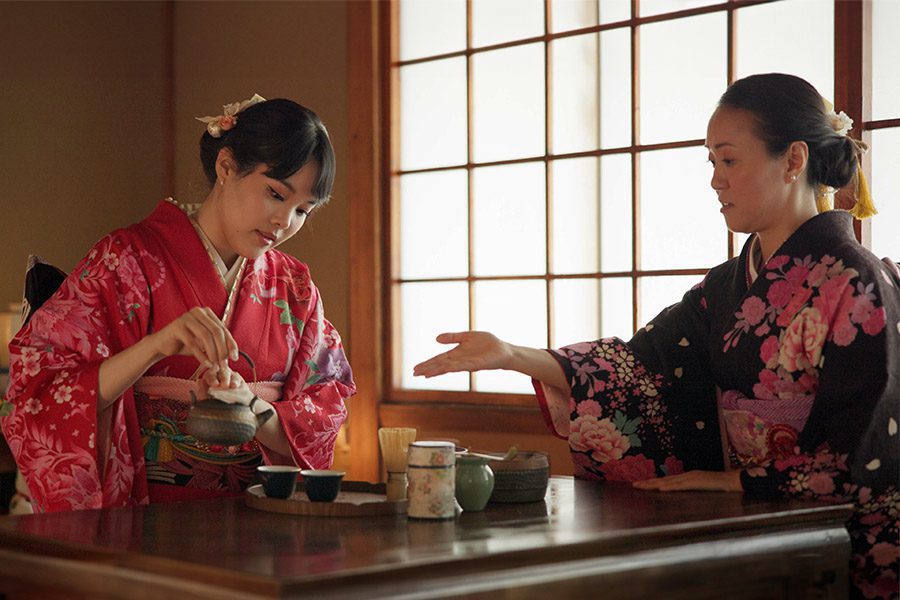
The Japanese tea ceremony is a deeply rooted spiritual and cultural practice originating in the 16th century.
During this Japanese tea ritual, tea is prepared and served to guests according to a precise set of movements and rituals. Attention to detail and simplicity are essential, and the host must be well-versed in the principles of wabi-sabi, a Japanese philosophy that celebrates beauty in imperfection and transience.
The Japanese tea ceremony also represents a significant tourist attraction in Japan. Many tourists experience this ritual first-hand, seeking to enjoy the tasting of high-quality tea and to dive into an authentic and enriching cultural experience that leads to a deeper understanding of Japanese culture.
Regions of Japanese Tea Production
Japan boasts several key regions dedicated to tea cultivation, each with unique characteristics influencing tea’s quality and flavour.
Shizuoka
Located southwest of Tokyo, Shizuoka is Japan’s primary tea-producing region, accounting for approximately 40% of all Japanese tea production. Its tea fields set against the backdrop of Mount Fuji provide not only stunning visuals but also optimal growing conditions, thanks to altitude and south-facing slopes.
Shizuoka’s temperate climate, together with its well-drained soil, facilitates the production of teas with a clean and bright flavour profile.
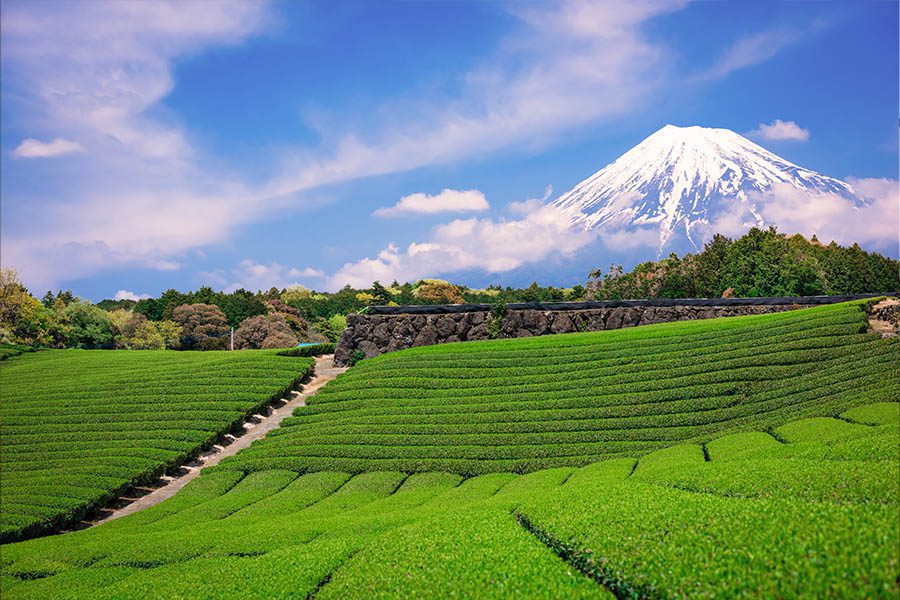
Kagoshima
Situated in southern Japan, Kagoshima is renowned for its warm climate and mineral-rich volcanic soils, allowing for multiple tea harvests annually, thus providing fresh tea all year round.
The mineral-rich volcanic soil of the region imparts a robust character and complexity of flavour to Kagoshima teas that are highly prized in the market, such as Sencha and Gyokuro.
Uji
Near Kyoto, Uji is famous for high-quality tea production, especially matcha and gyokuro.
The region employs a shading technique before harvest called “tana” to enhance tea’s sweetness and texture by increasing chlorophyll and theanine levels in the leaves.
Uji’s microclimate, with its rolling hills and rivers, creates a perfect environment for the production of teas with a deep umami flavour profile and silky texture.
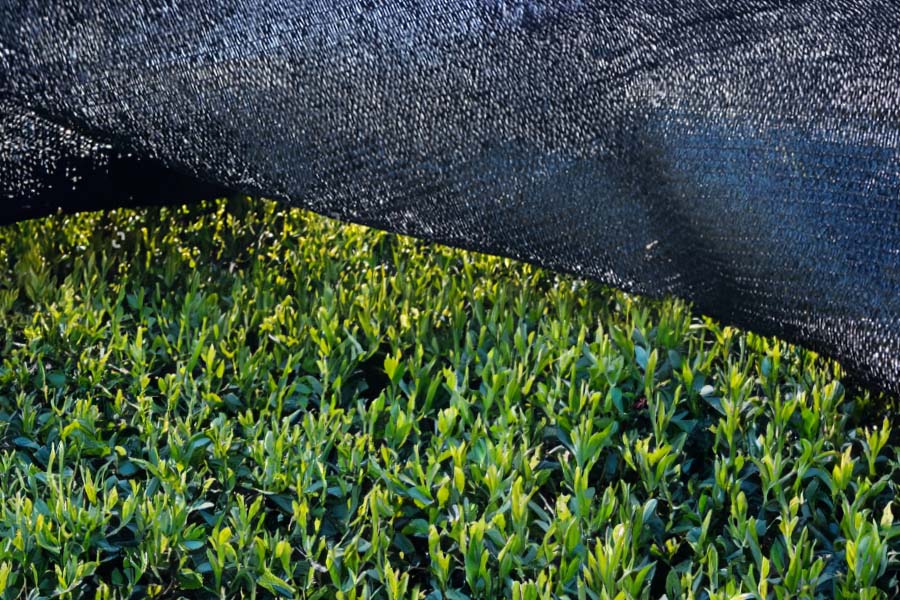
Fukuoka
Located on Kyushu island, Fukuoka is renowned for its production of gyokuro, considered one of Japan’s finest teas. The shading techniques used in this region contribute to its distinctive sweet and umami flavour.
Fukuoka’s climate is ideal for gyokuro cultivation due to its mild winters and humid summers, which provide a long growing season. The soil quality, naturally enriched with nutrients, favours the production of a high-quality, tender-leaf tea distinguished by its rich concentration of amino acids and low catechin content, resulting in its smooth and complex flavour.
Common Varieties of Japanese Teas
Japan is known for its wide range of green teas, each with unique characteristics that reflect the cultivation and processing techniques, and the cultural tradition surrounding them.
Below, we explore the main types of Japanese green teas, highlighting their particularities and attributes that make them essential in any professional assortment.
Sencha
Sencha leaves are grown under direct sunlight, which contributes to their fresh and vegetal flavour profile.
The quality of sencha varies considerably depending on the harvest season and processing technique. From shincha, or first harvest tea, which is distinguished by its delicacy and smoothness, to later harvests that, while less refined, offer a more robust and accessible flavour.
Sencha leaves, typically rolled into a needle shape, produce a bright green infusion with a balance between sweet and astringent notes.
The steaming process, followed by meticulous rolling, ensures a tea with a pleasant texture and complex flavour.
Discover and offer the essence of Japanese tea with this Alveus Premium Sencha, a high-quality variety that captures the authentic freshness and flavour of Japan.
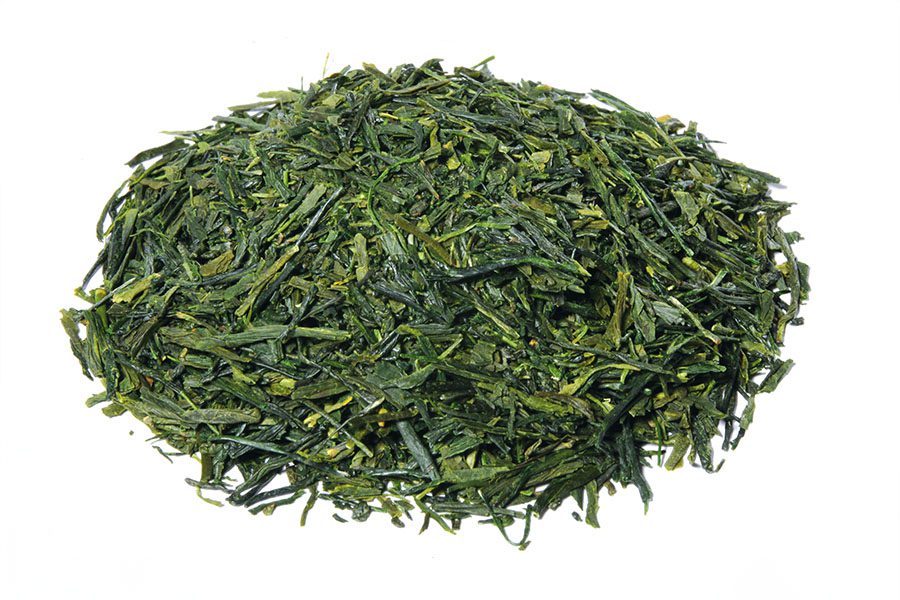
Gyokuro
Considered one of Japan’s finest and most exclusive teas, gyokuro undergoes a shaded cultivation process, involving covering the tea plants for approximately 20 days before harvest. This method reduces photosynthesis, increasing the production of chlorophyll and theanine, giving gyokuro a sweet flavour and a full body.
Gyokuro is distinguished by its emerald green liquor and an infusion with deep umami notes and a lingering sweetness.
Matcha
This powdered green tea is produced by finely grinding tencha leaves, which are also grown in the shade.
Traditionally used in the Japanese tea ceremony, matcha has gained global popularity for its versatility in modern cuisine, from desserts to speciality beverages.
Check out this other blog post for a healthy breakfast recipe with matcha.
Matcha has an intense flavour profile with a blend of sweet and umami notes, and it is known for its vibrant green colour. Its unique consumption method, where the powder is completely dissolved in water, allows for the full intake of the health benefits that this type of tea offers.
In our B2B online store, you will also find Japanese matcha tea like this Alveus Hisui Bio Ceremonial Matcha from Japan.
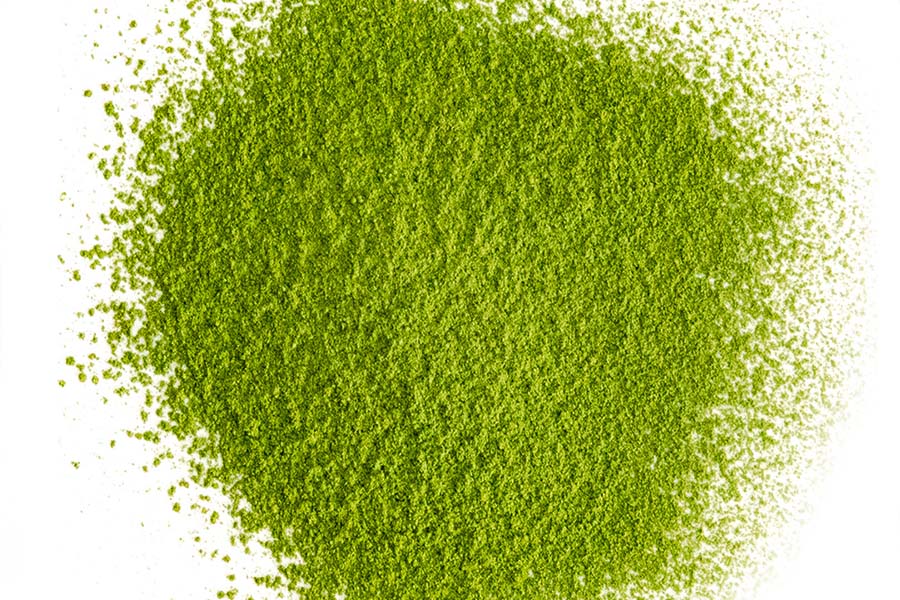
Genmaicha
Genmaicha is a combination of bancha green tea and roasted rice, created as an affordable beverage for the working class, but now widely appreciated for its unique flavour.
Genmaicha is characterised by its toasty flavour and cereal-like aroma, which complements the freshness of green tea. It is an excellent choice for both daily drinking and culinary use, offering a pleasant flavour profile that is perfect for pairing with light meals.
Discover the Japanese Genmaicha teas we offer at Alveus.
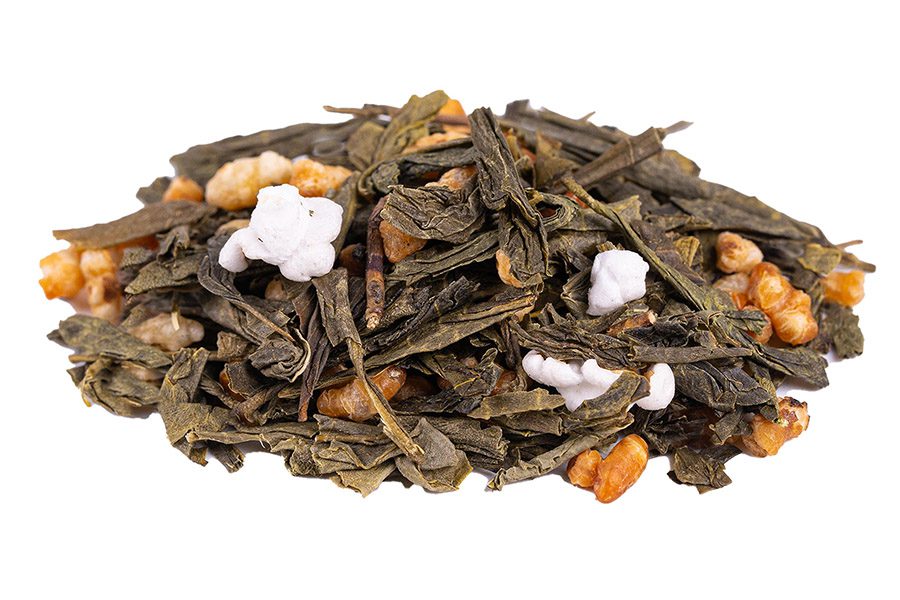
Houjicha
Houjicha is a green tea that has been roasted at high temperatures, which transforms its leaves from green to brown and reduces its caffeine content.
This technique not only changes the colour but also mellows the flavour of the tea, making it a popular Japanese tea choice for those seeking a less astringent and smoother option.
Houjicha offers a nutty taste and a roasted aroma, with a flavour profile that is less astringent than other green teas. Its low caffeine content makes it ideal for consumption at any time of the day. Additionally, its mild character makes it an excellent introductory tea for new consumers.
Bancha
Lastly, in this selection of Japanese teas, we must also consider Japanese Bancha tea. This tea is made from more mature and larger leaves, usually harvested in the second or third picking.
These more robust and less delicate leaves result in a more affordable tea that is commonly used in the daily life of the Japanese. Bancha is distinguished by its earthy flavour and amber colour, however being less delicate than Sencha.
Its robustness and affordability make it a popular choice for daily consumption, offering a consistent flavour profile and a good option for those seeking a quality tea at a moderate price.
Other Curiosities of Tea in Japan
In Japan, water significantly affects the quality of tea. Soft water enhances the delicate and complex flavours of green teas. In contrast, in places like London, where the water is hard, Japanese teas may not display their best profile, unless bottled or treated water is used.
Additionally, Japanese teas are not only consumed as a beverage. Genmaicha green tea is also used to cook a rice soup called Ochazuke, where hot tea is poured over a bowl of rice with toppings such as nori seaweed and salmon.
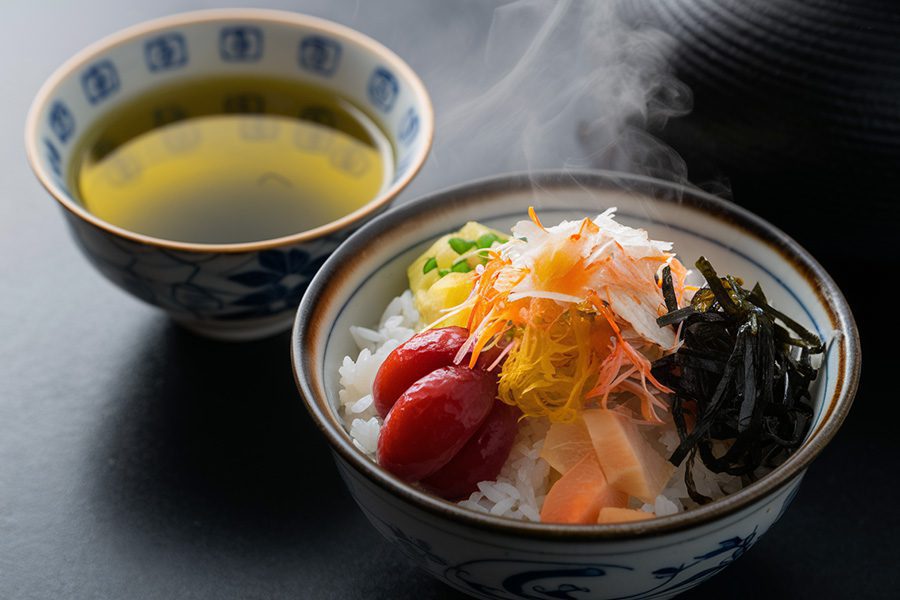
Another curiosity of Japanese tea traditions is their belief that consuming Shincha (first harvest tea) during the first 88 days of the year will bring good health and longevity.
Finally, it is worth noting that technology plays an essential role in tea production in Japan. From giant fans that protect crops from frost to advanced harvesting machines and irrigation systems, as well as temperature control systems that mitigate the impact of adverse weather conditions; innovation ensures superior quality and efficiency in Japanese tea production.
Conclusion
After this comprehensive post on Japanese teas, their traditions, sophisticated techniques, and production varieties, we can conclude that Japan maintains a clear balance between following ancestral practices and adopting contemporary innovations.
Tea professionals venturing into the world of Japanese tea will discover a wide range of exceptional flavours and qualities, and delve into a tea culture that values purity, precision, and beauty in every aspect of the process.
Attention to detail, from leaf selection to the crafting of each cup, ensures that Japanese tea remains a global benchmark for quality and authenticity in the tea industry.
This knowledge enriches professionals’ understanding of the sector and offers a valuable opportunity to expand and diversify their commercial offerings, elevating the tea experience to new levels of appreciation and enjoyment.


